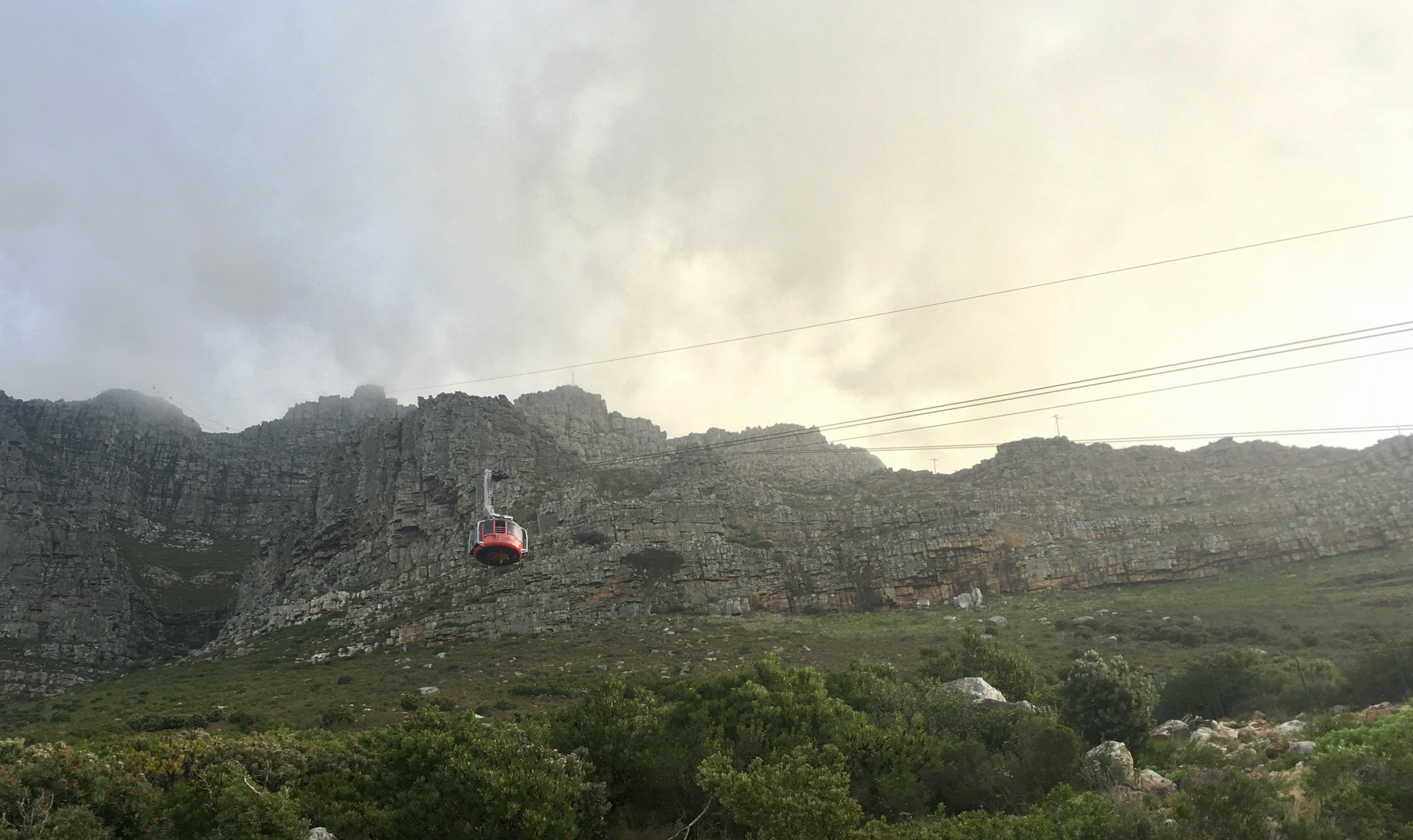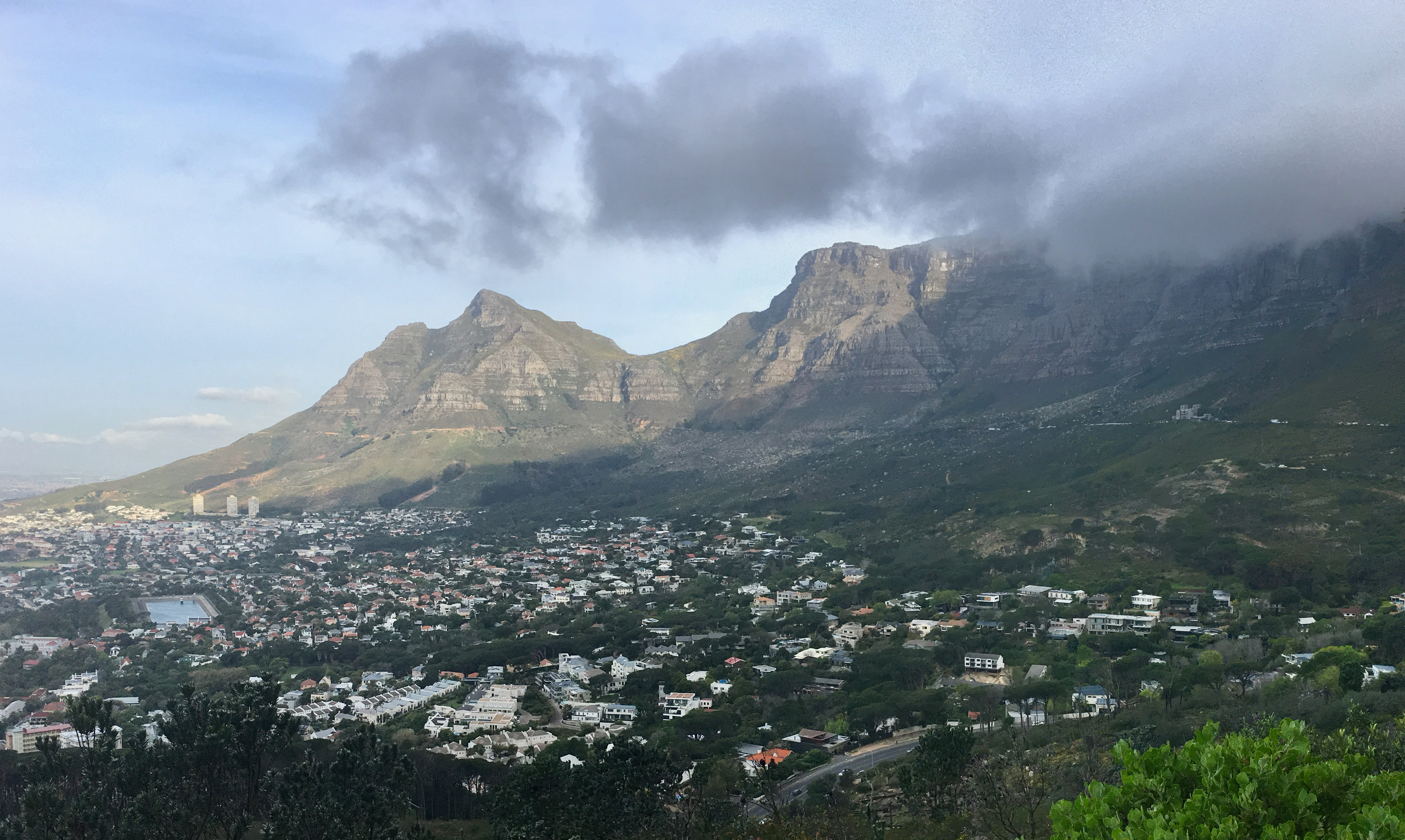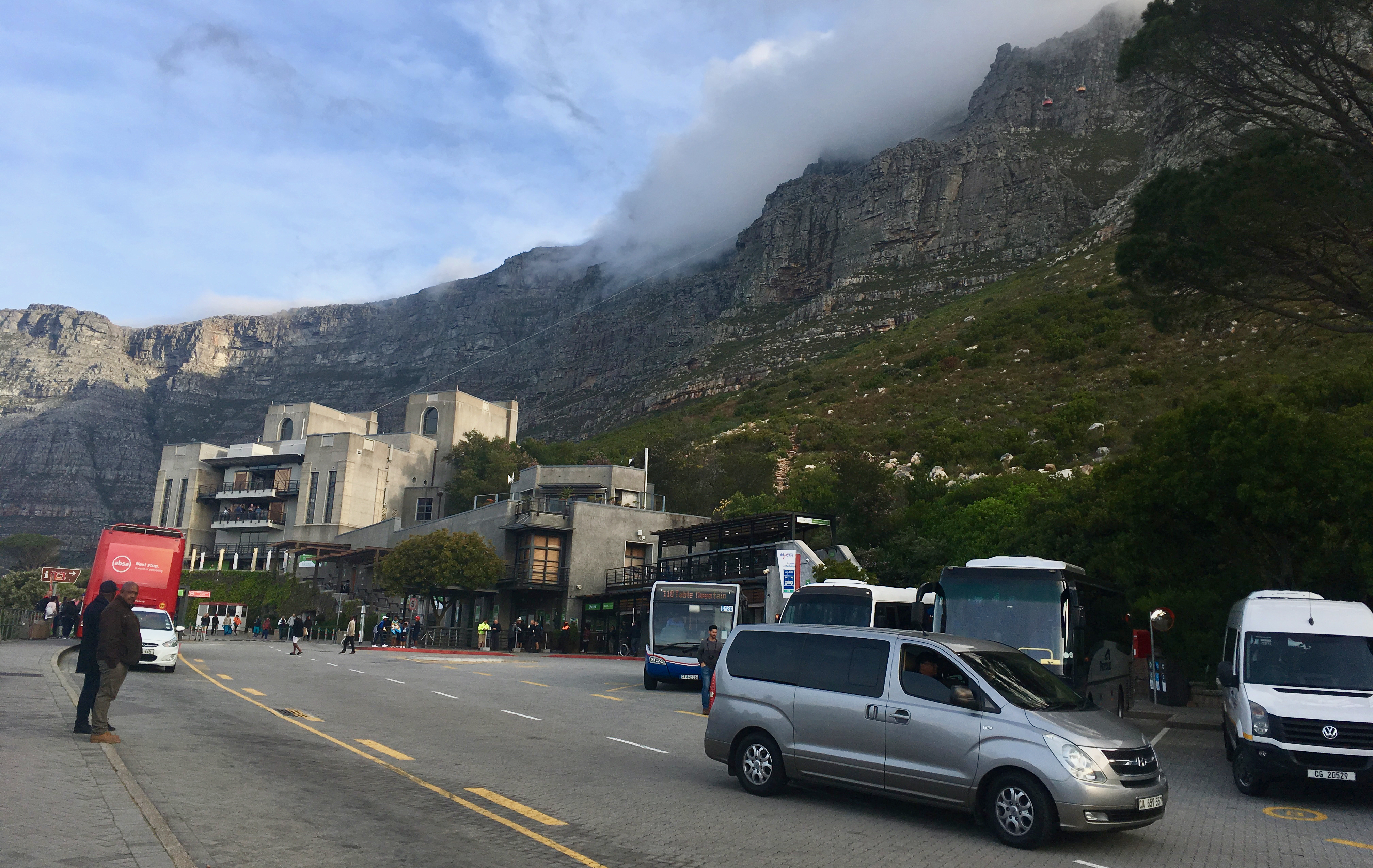Summer is approaching in Cape Town, which means that in the next few months someone will likely die on Table Mountain. I have spent almost my entire life here, and every year it is the same. In just the last decade, at least 50 people have died on the mountain, mostly during the warmer months. Some of these people committed suicide, but most of them died by accident.
Steep footpaths rise from the city edge, open to anybody willing to take them. Signposts with maps and illustrated precautions—don’t hike alone, wear suitable footgear—are often ignored. Tourists march up in sandals and get caught in clouds at the top, where a colder, wetter climate prevails. Strong winds strike the mountain like a ramp and blast moisture into the air, where at 3,000 feet it condenses. It can be 85 degrees Fahrenheit on the ground, with skies completely clear, but damp and frigid above the cliffs.
Last year, a 50-year-old Ghanaian woman went hiking with her husband and daughter up Platteklip Gorge, the mountain’s busiest route. She turned back and went missing, and her body wasn’t found until two months later. By then rescue teams had given up searching, saying that they were “95 percent” certain she had descended on her own. Her husband pasted notices across the city, asking anyone with information to contact him. Her body, already decomposing, was found less than 250 feet from the path.

The mountain is Cape Town’s defining geographical feature, level-topped and hewn from sandstone. There is no way of knowing how many people climb it each year, though the number is probably in the tens of thousands. This gives rise to a statistic that is at once distorted and revealing: in total, almost as many people are thought to have died on Table Mountain as Mount Everest. Because far fewer people attempt to scale Everest in the first place, Table Mountain’s per capita death rate is at least a hundred times lower. Still, 250 deaths on a mountain that is neither particularly big nor in any way remote—nor, for that matter, considered dangerous by most people—is astounding.
Central to the problem is that the mountain appears tame, hemmed in by urban development. A cable car ferries nearly a million people up the front face every year, with a restaurant and gift shop at the summit. Even locals “tend to think of Table Mountain as part of their backyard or something in their front garden,” a search-and-rescue spokesman named Johan Marais told reporters in January, after a local guide and a Japanese tourist died in a climbing accident, with a second Japanese tourist critically injured. “It’s not that. It’s an actual big mountain, with large rocks and all the things that go with a mountain.”
A database kept by the Mountain Club of South Africa records every known mountain safety incident in the country since 1653, when a Dutch sailor injured his shoulder on Table Mountain, just a year after colonists arrived in the bay that would become Cape Town. In 2006, the worst year on record, eight people died on the mountain, including a 21-year-old man who fell while climbing a ravine without ropes or safety equipment.
The figures would be worse without the efforts of search-and-rescue teams, staffed mostly by volunteers. Last year, there were more than 380 rescues on Table Mountain alone. “Many of the people who go onto Table Mountain are not sufficiently prepared to do it,” Marais, the spokesman, told me. “People underestimate the mountain.”
In many respects the mountain remains a wild place, standing apart from the metro that encircles it. Other risks stem from its proximity to one of the least equal societies on earth. Cape Town fans out from the mountain, still patterned by apartheid segregation. Middle-class suburbs cling nearest to the slopes, giving way to projects and shanties at the periphery. Muggers wait beside the footpaths to relieve hikers of their cell phones and jewellery, or cyclists of their bicycles. This is a recurrent point of outrage for recreational users of the mountain, who demand stricter policing of its trails. People carry pepper spray or walk with dogs, watching bushes for signs of movement.
On Table Mountain’s lower slopes last week, I left the track and found myself in a burned thicket. Crossing a small ravine, I slipped and grabbed a branch, cursing myself for being reckless. On the other side, in muddy soil, were hoofprints the size of my palm. They were left, almost certainly, by a remnant population of Himalayan tahrs, a giant Asian mountain goat that proliferated on Table Mountain after escaping a zoo in the 1930s. Culling programs since the 1970s have sought to eradicate the tahr, which damages the mountain’s fynbos vegetation and scares away indigenous antelope, but in secret folds and on inaccessible cliffs the creatures have clung on. I sat in a field of grazed flowers, hoping to see the animals, but none appeared before I made my way back down. I could hear the cars on a nearby road; a helicopter buzzed overhead. And then I was back in the city.







